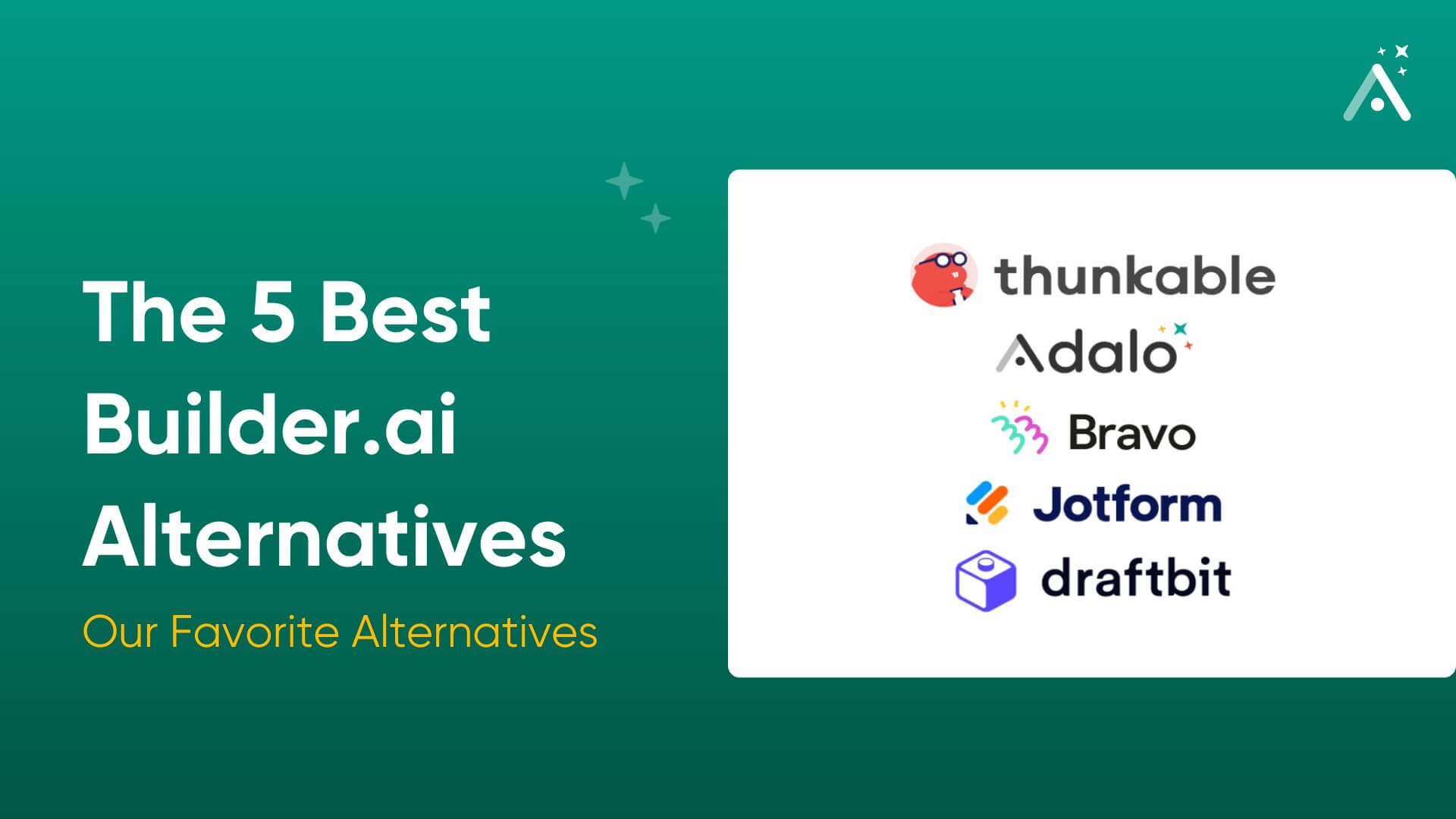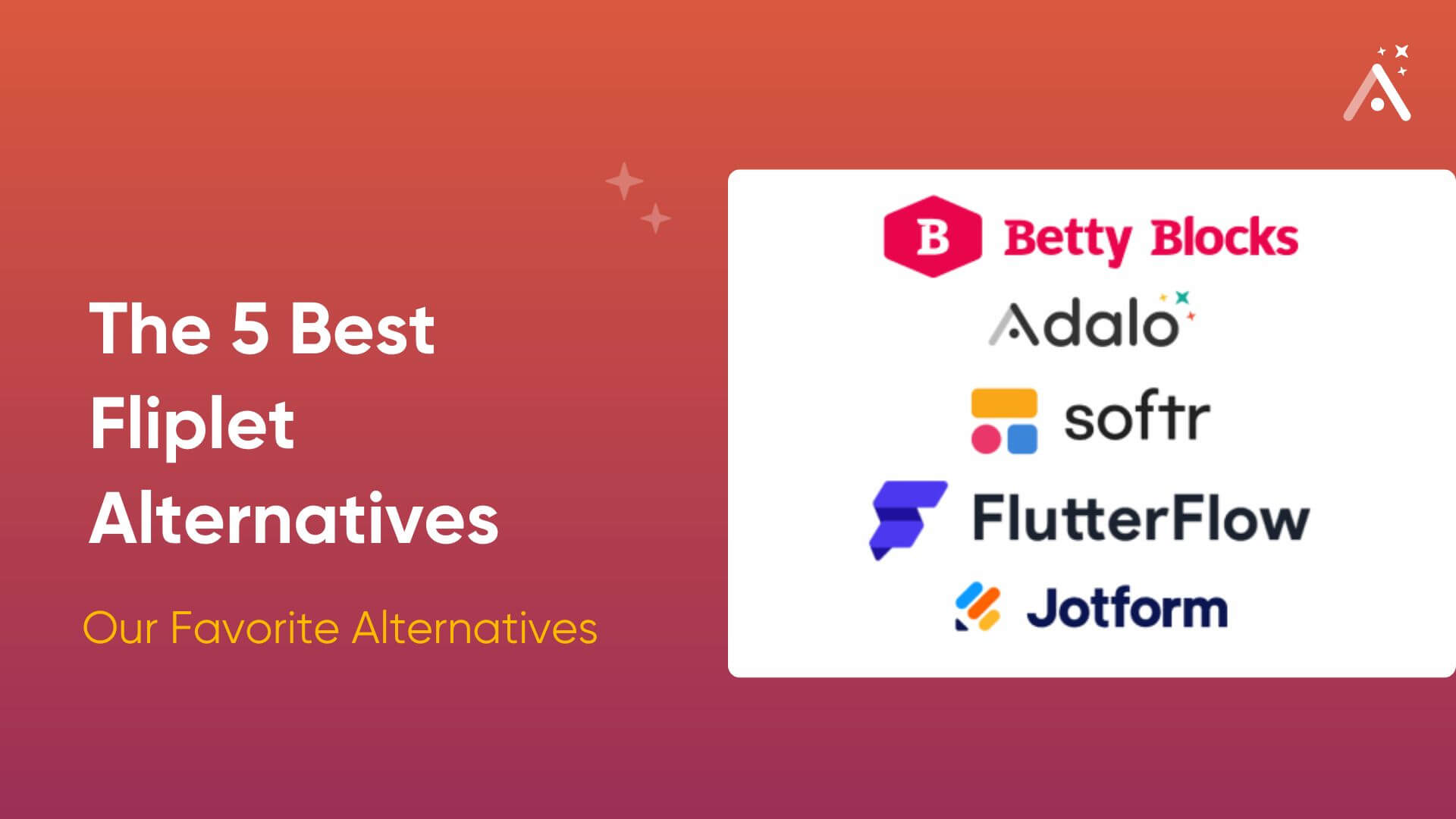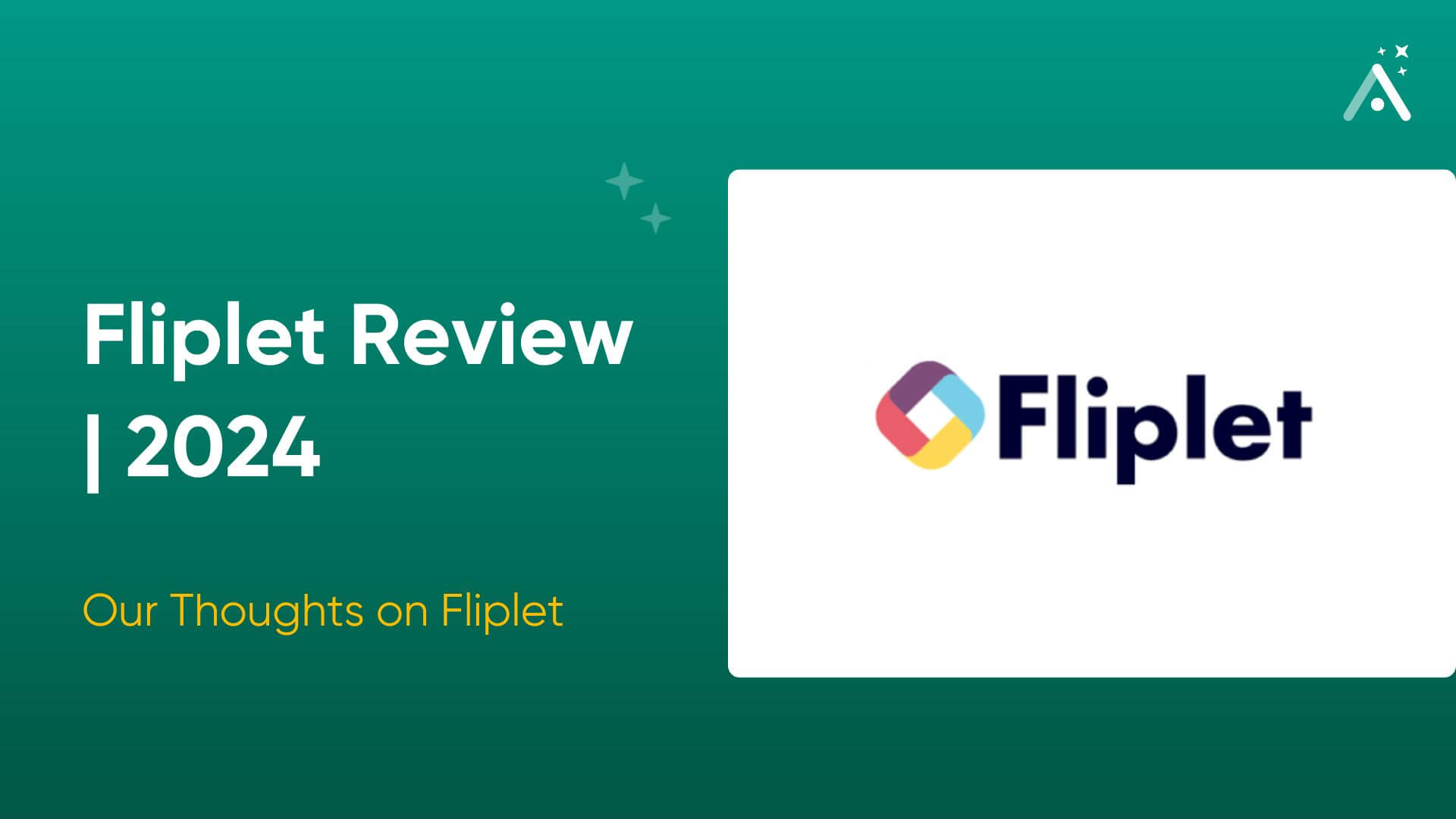The Bottom Line: FlutterFlow is a powerful app builder that’s flexible enough to breathe life into almost any app idea. However, it's ultimately a low-code platform, and its complex interface restricts its audience to a more technical crowd.
Pros:
- Gives you nearly pixel-perfect control and an enormous degree of design freedom.
- Allows you to keep your app’s source code.
- You’ll have access to a thriving ecosystem with abundant resources and learning materials.
Cons:
- Even after you get the hang of the intimidating building interface, you’ll need to know a few technical concepts to build your app.
- FlutterFlow requires you to already have a working database to connect to your app.
- There’s not much variety in pricing tiers. They only offer three options, with one pricing tier meant just for teams.
Pricing: Start using the FlutterFlow free version to learn the building interface and publish your app to the web. For $30/month (billed monthly), you’ll be able to download your own code. If you want to publish to the Apple App Store or Google Play Store, you’ll have to pay $70/month (billed monthly).

FlutterFlow Review: What is FlutterFlow?
FlutterFlow is a low-code web and native mobile app builder with a drag-and-drop interface that gives users a high degree of design flexibility and nearly pixel-perfect control. However, building your app with FlutterFlow requires some coding and technical knowledge.
Launching in 2021, FlutterFlow has already gained over 1 million users. While it hasn’t been around for a long time, FlutterFlow has earned a good reputation with the tech community due to its powerful app-building capabilities.

Getting Started with FlutterFlow
Signing up with FlutterFlow is simple — just provide an email and password and answer a few questions about the kind of app you want to build. You can either start building your app from scratch or use one of the free pre-selected templates based on the type of app you want to build.
If you don’t like the pre-selected templates, head over to FlutterFlow’s marketplace. Here, you’ll find a wide variety of free and paid templates made by the thriving community of FlutterFlow developers. Paid templates can cost as much as $200.
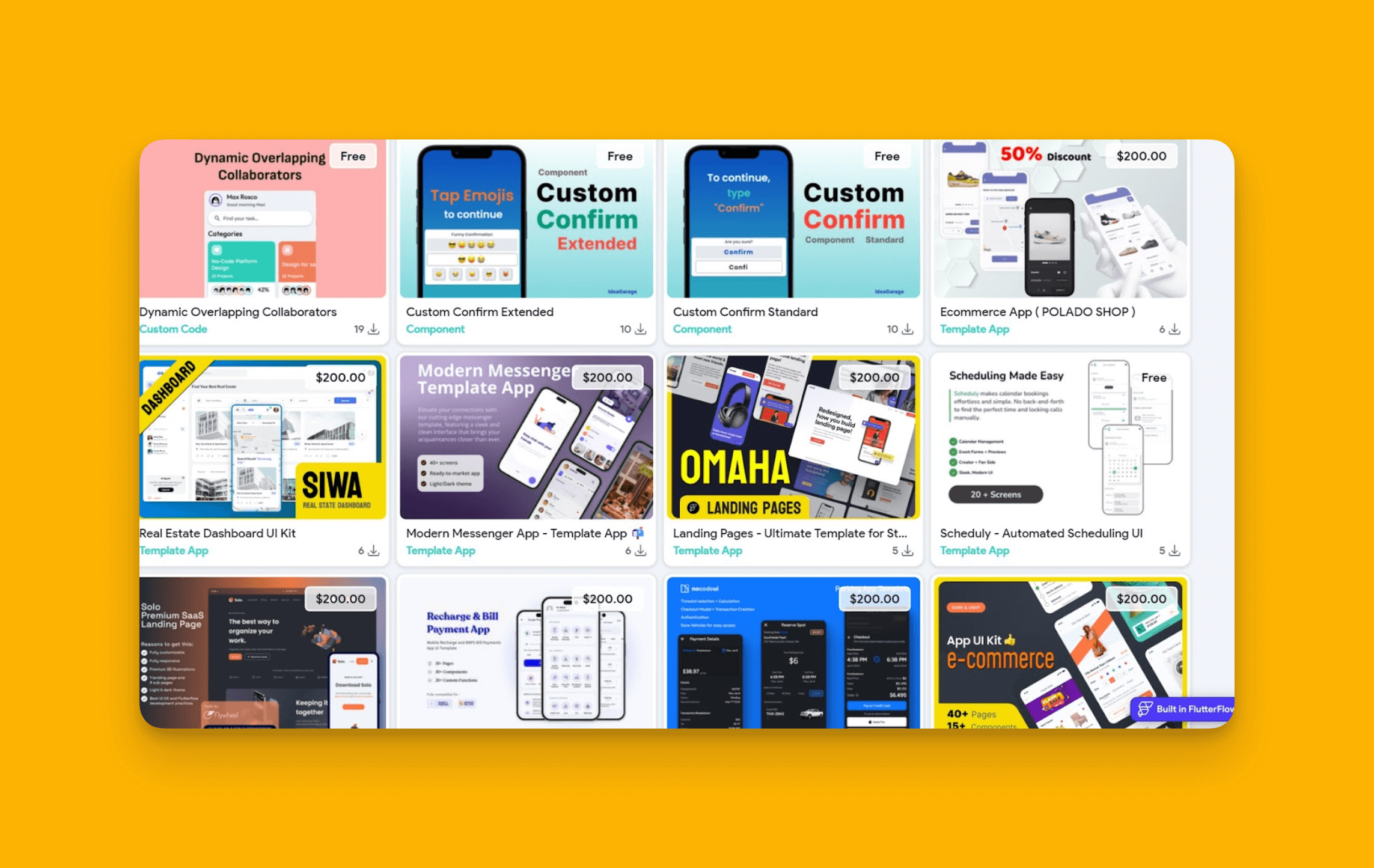
Learning FlutterFlow
After you get your template ready, you’ll arrive at FlutterFlow’s complex-looking building interface. To harness the full power of FlutterFlow, you’ll have to hit the books. But due to FlutterFlow’s expansive ecosystem, you’ll have abundant learning resources:
- The FlutterFlow Playground: This is FlutterFlow’s sandbox, which you can visit without signing up. You’ll be able to try out the building interface, add elements and widgets, and see how the code appears and changes when you add features.
- The FlutterFlow Community: Communicate with fellow FlutterFlow users and find updates to the FlutterFlow app-building platform posted by the FlutterFlow team.
- FlutterFlow Ambassadors: These are individual FlutterFlow experts who have posted loads of tutorial videos on YouTube or guides on their websites. Each expert takes a slightly different angle on FlutterFlow, so you can uncover many new skills and tricks.
- FlutterFlow’s YouTube Channel: FlutterFlow’s own YouTube channel is the holy grail of FlutterFlow tutorials. It has about 400 videos and is conveniently divided into different playlists covering simple topics like getting started with FlutterFlow, and advanced topics like how to tackle Firebase Setup, Authentication, and more.
Learning FlutterFlow will take considerable time, patience, and intellectual elbow grease — especially if you aren’t technical. When you start building your app, you should have these learning resources by your side.
Also, set aside some time to study some of FlutterFlow’s features. This will help you get familiar with its complex building interface.
Building with FlutterFlow
FlutterFlow features a drag-and-drop interface with the building canvas at the center of the screen. You can adjust the canvas to fit the size of a mobile phone, tablet, or desktop. If you’re picky about the size of your canvas, you can manually set the pixels to your desired dimensions.
To the immediate left is the navigation menu, which lets you choose which widgets or actions you can add to your screen. You’ll also be able to add logic and connect your database and APIs or plug in your own custom code.
To build out the user interface, drag elements from the left-hand dashboard onto your building canvas. Click on each element and fine-tune it using the properties editor on the dashboard to your right.
The building interface has some cool features, like the option to run your app in “test mode.” This lets you view your app as it would appear live. You can try out all your logic, actions, network calls, and animations.
If you don’t like the way your app works or appears, FlutterFlow even lets you edit it in test mode. Use this feature to polish your app before you publish it.
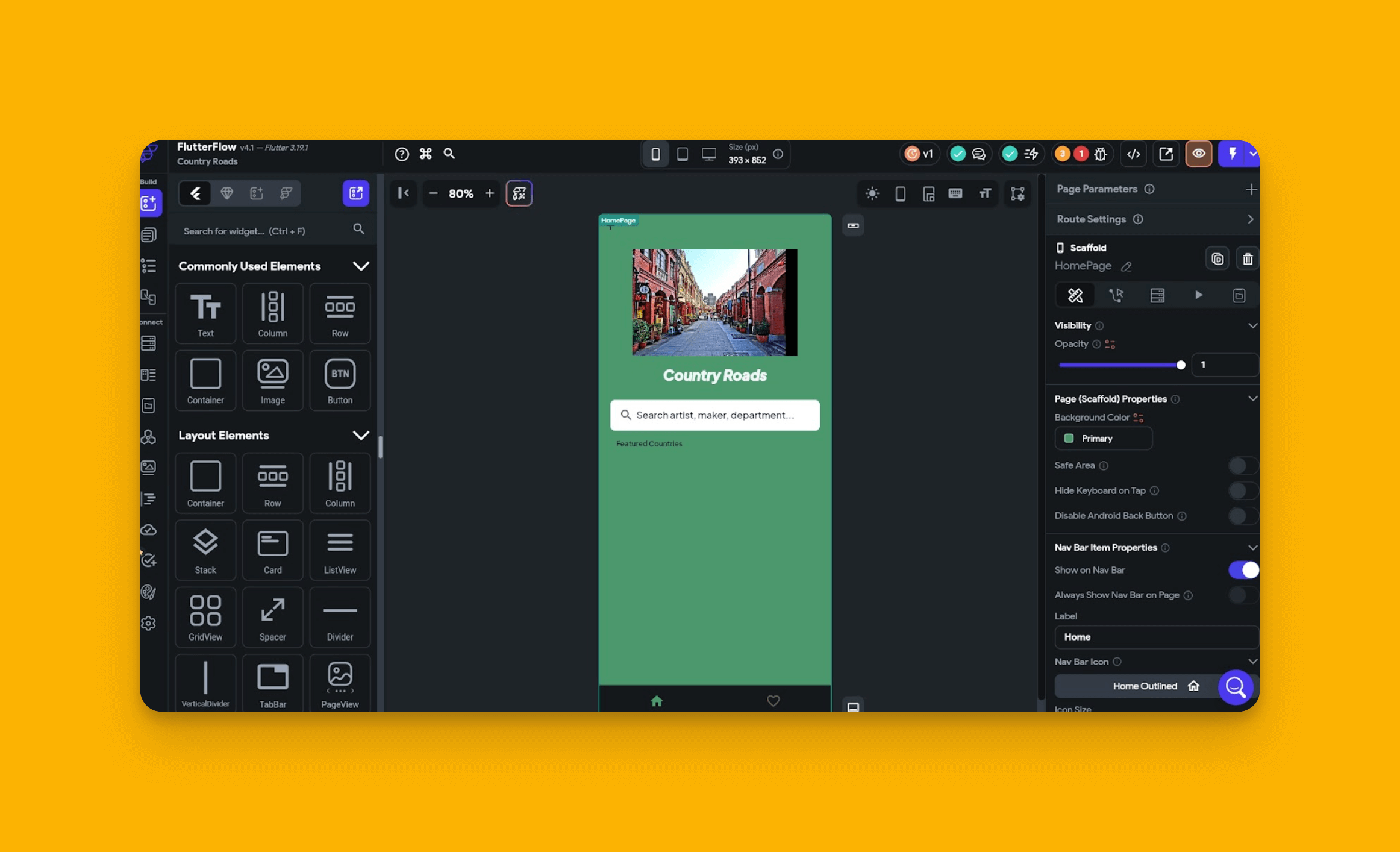
Here’s where you’ll need to put your technical skills to work: If you want to add customized functionality or connect to certain third-party integrations, you’ll need some coding knowledge.
Additionally, although FlutterFlow has tried to make connecting your database to the platform as simple as possible, you’ll still need to know some technical concepts to connect your database to your app and structure your schema.
FlutterFlow does provide a useful AI tool to help you develop your app's more technical aspects. For instance, you can describe a feature you want to add to your app, and the AI will generate its code.
FlutterFlow’s AI isn’t a substitute for lacking technical knowledge. You need to know the underlying technical concepts to use Flutterflow’s AI effectively.
Is FlutterFlow Right For You?
FlutterFlow is a great app-building platform, but it’s not for everyone. Select FlutterFlow if:
- You’re pretty comfortable with coding and technical concepts.
- You have the patience and time to learn how to use FlutterFlow’s building interface.
- You want a powerful app-building platform that lets you build super good-looking apps.
However, you should take a look at other app builders if:
- You don’t know any coding or technical concepts.
- You want an app-building platform that you can use right out of the box — in other words, you don’t want to deal with a steep learning curve.
- You don’t have your own database, or you plan to build your database as you make your app.
What Kinds of Apps Can I Build With FlutterFlow?
Because FlutterFlow is such a powerful platform, there’s really no app you can’t build. Whether you want to build an online store, social network, or a Kanban board for your team, FlutterFlow has every API connection, integration, and component you need.
FlutterFlow’s free version lets you publish a web app that your users access using their web browsers. The lowest tier pricing model gives you your own custom domain, and the highest tier lets you publish a native mobile app to the Apple App Store and Google Play Stores.
FlutterFlow Pricing: Is it worth it?
FlutterFlow has a free version that gives you a taste of how the interface works and an integration with Firebase and Supabase, which provide developer tools, cloud storage, and more. You’ll also be able to add code to develop unique components and logic.
At $30/month (billed monthly), you’ll get FlutterFlow’s Standard Version, which lets you download your app’s source code. While you can’t publish to the Apple App Store or Google Play Store, FlutterFlow provides an Android Package Kit (APK), allowing users to download your app as a native mobile app from a link you provide.
Get FlutterFlow’s Pro Version for $70/month (billed monthly). This is the highest tier for individuals, and it's full of developer features like GitHub integration, automated testing, and one-click localization. You can publish your app to the Apple App Store and Google Play Stores.
Want to build your app with a team? Then get FlutterFlow’s Team Version, priced at $70/user/month (billed monthly). This version provides team-specific features, like real-time app editing and collaboration, shared libraries, managed billing, and more.
A couple more things about pricing: FlutterFlow has a network of agencies who can build your app for you, but doing this will cost thousands of dollars. FlutterFlow also supports academia — if you’re a college student or educator, you may qualify for a full-year free trial of FlutterFlow.
FlutterFlow Alternatives: What Other Tools Should You Try?
Looking for a less technical but equally powerful app builder? Try out our FlutterFlow alternatives:
- Adalo, a super-easy, powerful no-code mobile app builder that features an intuitive drag-and-drop interface that you can use right out of the box.
- Glide, a no-code web app builder offering 100s of beautiful templates that can create truly breathtaking apps.
- Bubble, a powerful no-code web app builder with the flexibility to create any app, supported by an extensive ecosystem.
Verdict
What’s my final opinion about FlutterFlow? Should you get it now, shortlist it, or avoid it?
Get it now if you’ve got technical and coding experience and a database. You’ll be right at home because you’ll understand the building interface’s tech-centric jargon and details, and you’ll be able to patch in your customized code.
Shortlist it if you’re a techie but aren’t sure if you want to go with an option with more flexible pricing tiers.
If you aren’t technical and want an app-building platform that allows anyone to make a professional-looking and powerful app, check out Adalo. You can easily start building right after signing up. Adalo also has 5 pricing options, including a very powerful and generous free version.
Publish your app as a web app and a native mobile app that users can download on the app stores. When you create your app with Adalo, you’ll have the potential to get your app in front of millions.
Create Your App Today
Start building in a matter of minutes






